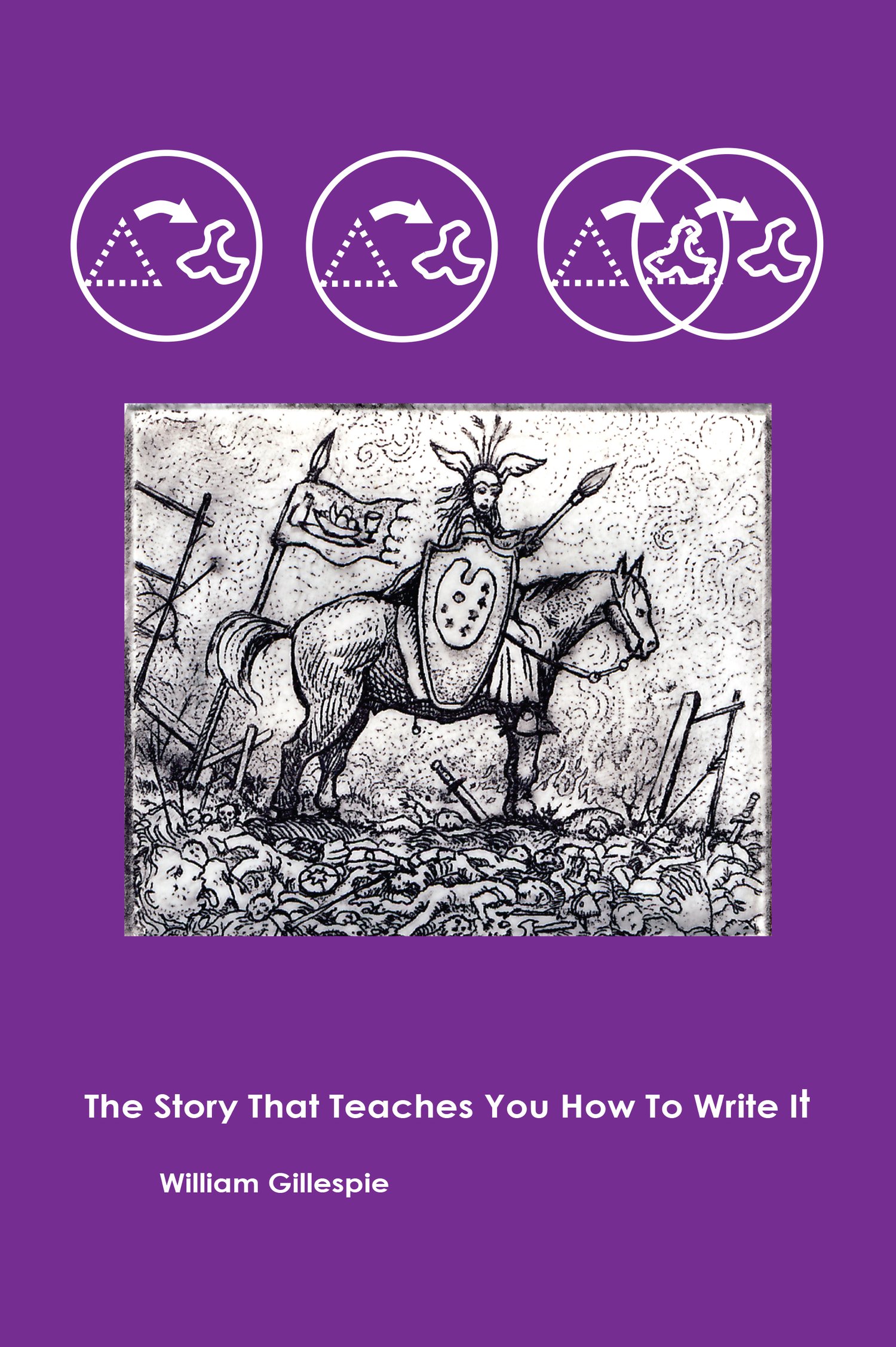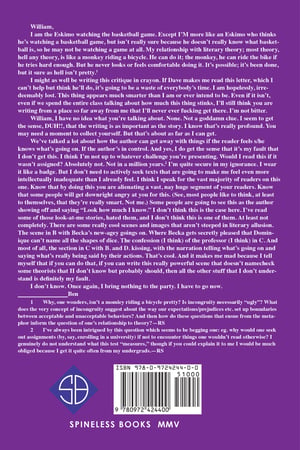The Story That Teaches You How To WrIte It, by William Gillespie
by Dominique Fitzpatrick-O'Dinn and William Gillespie
$10.00
The Story That Teaches You How To Write It is a simultaneous story and essay. The story (on the verso (left) pages) is about graduate students in love. The essay (on the recto (right) pages) is about the structure of the story opposite, describing the techniques used in composing each section. Both take as a starting point Roland Barthes's S/Z and structuralist narratology. The book is primarily a reference for innovative fiction writers: experimental fiction that makes it clear what the experiments actually are. The purpose is to turn literary criticism back into literature by showing how analyses of novels might point the way to new forms. Unlike science, experiments in art strive for irreproducible results, so the methods deployed here can be used to compose entirely different sorts of work. George Lakoff's theory of metaphor is used to design characters, and music composition is used as a way to understand writing. The story was handed out in a graduate writing workshop led by David Foster Wallace, and student comments appear in footnotes, providing an additional layer of interpretation, as well as a commentary on the workshop experience itself.
Purple paperback. On the left-hand pages in numerous forms a story of students in love. On the right-hand pages an essay explaining the forms used. ISBN: 0-9724244-0-7. 6 by 9 inches. 80 pages. Perfect bound. Distributed by Ingram. 13-03-2005. $10.
Review by Eckard Gerdes from Context
William Gillespie. The Story That Teaches You How To Write It. Spineless Books, 2005. 79 pp. Paper: $10.00.
Apparently, the year is 1996. Forming a postmodernist, theory-driven novel is at the forefront of the ostensible author’s thoughts. The Story That Teaches You How To Write It is a logical byproduct of the mass production of fiction writers by university MFA programs. Interestingly, the program in which this novel is set encourages theoretical analysis of work, yet it never seems to venture beyond narratology. The narrator begins to construct a novel by pulling together the theoretical positions of several notable critics and authors, including Roland Barthes and David Foster Wallace, who apparently was the teacher of the workshop at which the story was constructed. The recto pages examine the pushing and pulling of narrative theories as argued during class. Diagrams, outlines, and geometry are employed to help clarify the concepts. The verso pages attempt to illustrate the theoretical discourse within the context of a particular story about two writing students whose lesbian affair is disrupted by a tryst one of them has with their teacher. Much is made of the riskiness of the unattributed dialogue between one of the women and her psychiatrist, but such dialogue remains closer to Portnoy’s Complaint than anything truly risky (i.e., non-narrative). And though the plot is presented in varying ways that are commented upon in the theory section, the Gillespie character defines story strictly as narrative, and both the recto and verso sections move forward chronologically. Implied in this is that much of the intellectual spinning that is done in MFA programs is really little more than rationalization for a pro-narrative fictional bias. Is Gillespie tacitly supporting this bias or is he satirizing the dominance of that old two-step? Underlying the identification of dialogue as a method for writing a scene in “real time” is the dominance of chronology. Not only is the superiority of narrative a foregone conclusion for the workshop participants,
but other possibilities, such as “geographic achrony” are only paid lip service. No matter how fast one spins while dancing the two-step, it’s still the two-step. And despite the two-steppers’ claims to the contrary, it is not the only dance in town. Gillespie is, I suspect, satirizing narrative by supporting it with narratology to its most absurd extreme, and I applaud. When he says of his own story that it “takes place within a very small subculture: the world of graduate studies in English,” he rightly displays a narrator who has, like many MFA survivors, been duped. MFA programs are churning out narrativists as fast as Oprah-ites can swallow them. The only difference between untrained and unwashed popular writers and the so-called “literary” writers that academia manufactures is that the latter try to justify their commodification by using highfalutin’-sounding narratology as a defense, and the former just wave their dollars at everyone and give them the raspberry. [Eckhard Gerdes]



